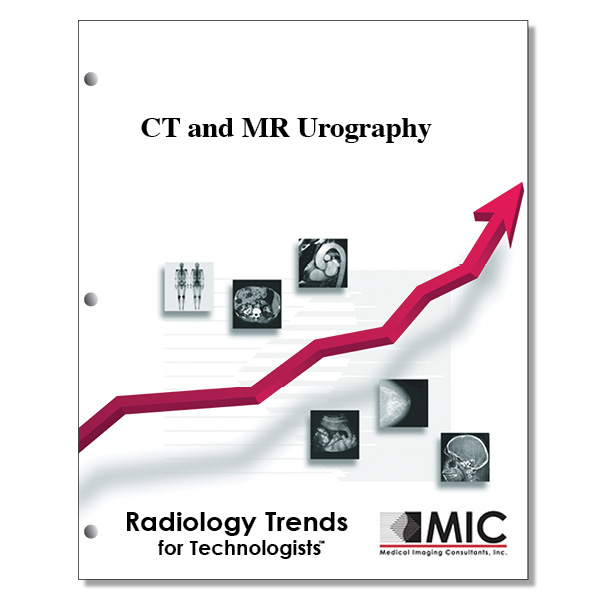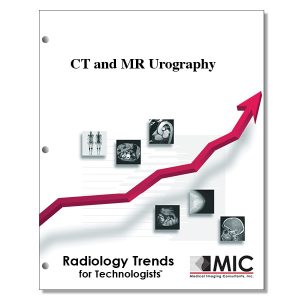

CT and MR Urography
A review of the indications and techniques for CT and MR urography and how these modalities have been replacing the traditional intravenous urography exam.
Course ID: Q00289 Category: Radiology Trends for Technologists Modalities: CT, MRI, Nuclear Medicine, Radiography, Sonography2.5 |
Satisfaction Guarantee |
$29.00
- Targeted CE
- Outline
- Objectives
Targeted CE per ARRT’s Discipline, Category, and Subcategory classification for enrollments starting after June 11, 2024:
[Note: Discipline-specific Targeted CE credits may be less than the total Category A credits approved for this course.]
Computed Tomography: 2.00
Procedures: 2.00
Abdomen and Pelvis: 2.00
Magnetic Resonance Imaging: 2.00
Procedures: 2.00
Body: 2.00
Registered Radiologist Assistant: 2.50
Procedures: 2.50
Abdominal Section: 2.50
Outline
- Introduction
- CT Urography
- Rationale
- Techniques
- Yield and Clinical Effectiveness
- Indications
- MR Urography
- Rationale
- Techniques
- Yield and Clinical Effectiveness
- Indications
- Urography with CT and MR: What are the Issues
Objectives
Upon completion of this course, students will:
- understand what type of CT technical advances have made CT urography possible
- understand what urological problems CT has become the test of choice to evaluate
- know what benefit MRI has over CT for evaluating the urinary tract
- know what technology was replaced by CT urography as the exam of choice
- understand what urological condition ultrasound is sensitive to detecting
- know what benefits radiography has over CT urography
- understand what baseline unenhanced CT images offer for urography
- know the relative contraindications for using a compression device in CT urography
- know how opacification of the urinary tract in CT urography can be improved
- understand when furosemide is safe to use during CT urography
- understand what abnormalities CT urography is able to depict
- understand what CT urography methods have been used in evaluating the urothelium
- understand how urothelial cancer typically appears in early phase enhanced images
- know what percentage of all urological visits are represented by patients presenting with hematuria
- understand the policy AUA established setting CT urography or intravenous urography as the initial test for a common clinical indication
- understand how CT urography can be useful in surveillance for patients who need repeat exams
- understand how nonenhanced CT urography scans may be the best choice
- be familiar with the benefits of MR imaging compared to CT
- understand ways in which CT urography and MR urography are similar and ways that they are different
- be familiar with early MR urography techniques
- understand the importance of T2-weighted imaging
- be familiar with coil selection in MR urography
- be familiar with benefits associated with moving from a 1.5T to a 3.0T MRI system
- understand the limitations in utilizing a 3.0T MRI system for MR urography
- be familiar with other imaging techniques used in MR urography
- be familiar with the different kinds of T2-weighted imaging that can be used in MR urography
- understand the type of excretory images typically acquired 5 minutes after administration of gadolinium
- understand whether oral hydration is used in MR urography
- be familiar with how furosemid is used in MR urography
- be familiar with scan time reduction methods used for the MR urography exam
- understand what MR is relatively insensitive for detecting
- be familiar with the types of exams that MR can safely perform on sensitive patient populations
- understand factors that minimize radiation dose during CT urography
- applying the concept of ALARA, be familiar with what is an acceptable CT urography exam of a young patient presenting with hematuria
- understand what imaging procedures are acceptable when a patient has a low GFR
